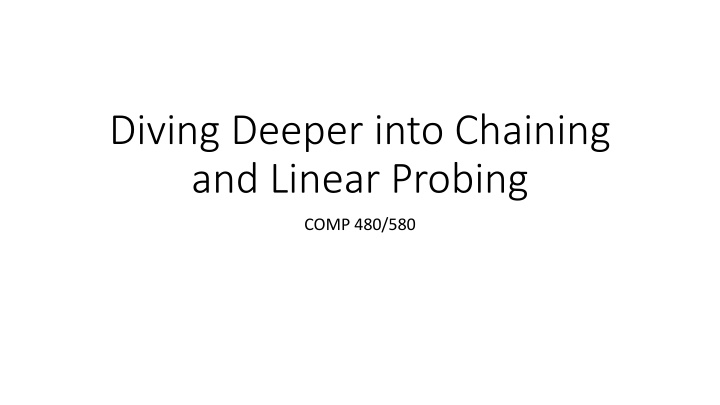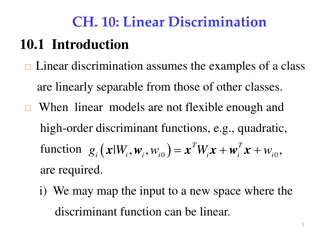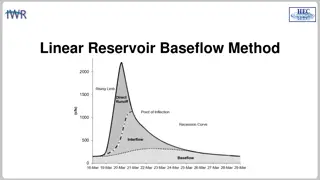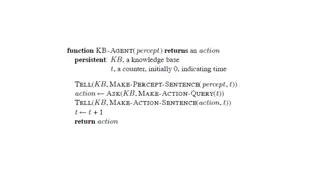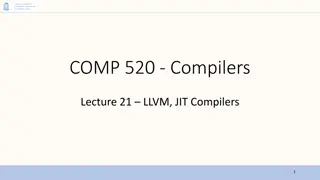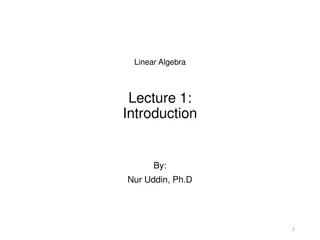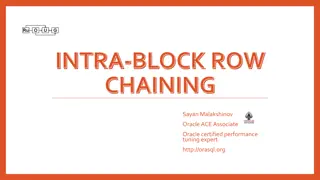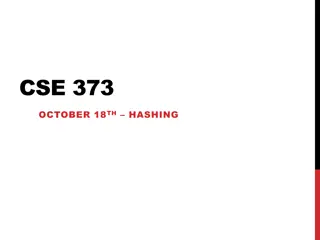Chaining and Linear Probing in COMP 480/580
Delve into the concepts of chaining, linear probing, and k-universal hashing families, their implementations, load factors, and variations in hash table strategies. Understand the significance of good running times, approximations, and the use of power-of-two choices for optimized performance in data storage and retrieval.
Download Presentation

Please find below an Image/Link to download the presentation.
The content on the website is provided AS IS for your information and personal use only. It may not be sold, licensed, or shared on other websites without obtaining consent from the author.If you encounter any issues during the download, it is possible that the publisher has removed the file from their server.
You are allowed to download the files provided on this website for personal or commercial use, subject to the condition that they are used lawfully. All files are the property of their respective owners.
The content on the website is provided AS IS for your information and personal use only. It may not be sold, licensed, or shared on other websites without obtaining consent from the author.
E N D
Presentation Transcript
Diving Deeper into Chaining and Linear Probing COMP 480/580
Refresher k-universal hashing family ? A hash function is k-universal if for any set ?1,?2, ,?? For h chosen uniformly from H, (?1), (?2), , (??) are independent random variables. OR Pr ?1 = ?2 = ...= ?? 1 ?? 1 We saw 2-universal family. Generally for k-independent family we need polynomial in k h(x) = (????+ ?? 1?? 1+ + ?1? + ?0) mod P mod R Higher independence is harder to achieve from both computation and memory perspective.
Separate Chaining. key space = integers TableSize = 10 0 1 2 3 4 5 6 7 8 9 ptr 41 h(K) = K mod 10 Insert: 7, 41,18, 17 ptr ptr 17 7 18 3
What we saw? m objects inserted into array of size n Expected length of chain 1 +? 1 The quantity ? ? is termed as load factor denoted by ? Expected addition and search time 1 + ? ? Worst Case: m Is this satisfactory? Are there better variants of chaining? How much better?
What is a good running time? Log(n). Natural question: What is the probability that there exist a chain of size log(?) . More information than expected value!!
Counting and Approximations! Theorem: For the special case with m=n, with probability at least 1-1/n, the longest list is O(ln n / ln ln n). Proof: Let Xi,k= Indicator of {key i hash to slot k}, Pr(Xi,k=1) = 1/n The probability that a particular slot k receives > keys is (letting m=n) n n 1 1 n 1 = (assuming lot if independence) ! m If we choose = 3 ln n / ln ln n, then ! > n2 and 1/ ! < 1/n2. Thus, the probability that any n slots receives > keys is < 1/n.
Better? (Power of two (multiple) choices) Can we do better? Use two hash functions, insert at the location with smaller chain. Assignment: Using m=n slots, with probability at least 1-1/n, the longest list is O(log log n). Exponentially better!! Template for Power of Two choices: Do independent things in parallel pick the best. (Bloom filters?)
Linear Probing F(i) = i Probe sequence: 0th probe = h(k) mod TableSize 1th probe = (h(k) + 1) mod TableSize 2th probe = (h(k) + 2) mod TableSize . . . ith probe = (h(k) + i) mod TableSize 8
Probing or Open Addressing Insert: 38 19 8 109 10 0 1 2 3 4 5 6 7 8 9 8 109 10 Linear Probing: after checking spot h(k), try spot h(k)+1, if that is full, try h(k)+2, then h(k)+3, etc. 38 19 9
Major Milestones of Linear Probing In 1954, Gene Amdahl, Elaine McGraw, and Arthur Samuel invent linear probing as a subroutine for an assembler. In 1962, Don Knuth, in his first ever analysis of an algorithm, proves that linear probing takes expected time O(1) for lookups if the hash function is truly random (n-wise independence). In 2006, Anna Pagh et al. proved that 5-independent hash functions give expected constant-time lookups. In 2007, Mitzenmacher and Vadhan proved that 2-independence will give expected O(1)-time lookups, assuming there s some measure of randomness in the keys.
Linear Probing in Practice In practice, linear probing is one of the fastest general-purpose hashing strategies available. This is surprising it was originally invented in 1954! It's pretty amazing that it still holds up so well. Why is this? Low memory overhead: just need an array and a hash function. Excellent locality: when collisions occur, we only search in adjacent locations. Great cache performance: a combination of the above two factors
Analyze Expected cost of Linear Probing For simplicity, let s assume a load factor of = ? What happens to linear probing of ? 1 Contrast with chaining. ?= / . A region of size m is a consecutive set of m locations in the hash table. An element q hashes to region R if h(q) R, though q may not be placed in R. On expectation, a region of size 2?should have at most / 2? elements hash to it. It would be very unlucky if a region had twice as many elements in it as expected. A region of size 2? is overloadedif at least / 2? elements hash to it.
A Provable Fact Theorem: The probability that the query element q ends up between 2? and 2?+1 steps from its home location is upper-bounded by c Pr[ the region of size 2? centered on h(q) is overloaded ] for some fixed constant c independent of s. Proof: Set up some cleverly-chosen ranges over the hash table and use the pigeonhole principle. See Thorup s lecture notes. https://arxiv.org/abs/1509.04549 https://arxiv.org/abs/1509.04549
Overall we can write the expectation as E(lookup time) ? 1 1 =? 1 1 log(?)2?+1 Pr ? ?? ??????? 2? ??? 2?+1 ???? ???? ???? (?) log(?)2? Pr[ the region of size 2? centered on h(q) is overloaded] If we can bound Pr[ the region of size 2? centered on h(q) is overloaded ]
Recall A region is a contiguous span of table slots, and we ve chosen = / . An overloaded region has at least 2 elements in it. Let the random variable B represent the number of keys that hash into the block of size 2 centered on h(q) (q is our search query). We want to know Pr[ B 2? ]. Assuming our hash functions are at least 2-independent (why?), we have E[B ] = 2 . Pr[ B 2? ] is equivalent to Pr[ B 2 E[B ] ]. Thus, looking up an element takes, on expectation, at least ? 1 1 log(?)2? Pr[?? 2 .?[??]]
Apply Markovs No Assumptions!! Pr[ B 2 E[B ] ] 1 2 log(?)2? Pr[?? 2 .?[??]] log(?)2? 1 ? 1 1 ? 1 1 ?(?). BAAAAAAD (we want Pr[?? 2 .?[??]] to decay faster than 2 ? to get anything interesting)
Concentration Inequalities (Last Class) Markov s Inequality Pr ?? ? ?? ? ? ?? 1 ?+1 A fair coin is tossed 200 times. How likely is it to observe at least 150 heads? Markov: 0.6666 Chebyshev: 0.02 Chernoff: 0.017 Chebyshev s Pr |?? ? ??| ? ??? ?? ?2 Chernoff Bounds. Pr ?? ?[??] ? ? ?? 2? (?2 ?[??]) 2+?
Concentration Inequalities (Last Class) Markov s Inequality Pr ?? ? ?? ? ? ?? 1 ?+1 Chebyshev s Pr |?? ? ??| ? ??? ?? 2 ) (??? ?? ??? ??? ???? ? ? ?? ?2 Chernoff Bounds. (?? is sum of i.i.d variables) Pr ?? ?[??] ? ? ?? 2? (?2 ?[??]) 2+? More Independence More Resources in Hash Functions
Can we bound the variance? Define indicator variable: ??= 1 if ?? elements maps to block of size 2 centered at h(q) ? ?? = 2? ? ??= ??, E Bs = E[ ??] = 1 3 2?
Variance Var[??] = ? ??2 ? ?? E[ ?? = ?[?? = ?[??] + ? ???[??] What does 3-independence buys us ? ???[??] < ? ?? So Var[??] E[??] 2 2 + ???? 2] + ?[????] 2] = ? ?? (assuming 3-independence!!) 2(why? do the math)
??? ?? ? ??2 1 Pr |?? ? ??| ? ?? 3 2 ? log(?)2? Pr[?? 2 .?[??]] ? 1 1 ?[??] ? 1 1 log(?)1 = ?(log(?)) The bound is tight for 3-independence
Going Beyond: 4th Moment Bound Pr |?? ? ??| ? 4? ?????? ?? ?4 Assignment: Prove that expected cost of linear probing is O(1) assuming 5-independence using the above 4th moment bounds.
In practice 2-independence suffice? In 2007, Mitzenmacher and Vadhan proved that 2-independence will give expected O(1)-time lookups, assuming there s some measure of randomness in the keys. Assignment for Grads: Read this paper.
Cuckoo Hashing Worst case of both chaining and probing is O(n). Expected is O(1). Includes both insertion and searching. Can we sacrifice insertions for worst case O(1) searching? YES Cuckoo Hashing
Cuckoo Hashing: Insertion Algorithm To insert element x, call Insert(x, 1) To insert x: Put in first location and displace residing element if needed Put displaced element in its other location Until finding a free spot Insert(x, i): 1. Put x into location hi(x)in Ti 2. If Ti[hi(x)] was empty: return 3. If Ti[hi(x)] contained element y: do Insert(y, 3 i) d ty c x h2(y) = h2(a) Example: b h1(e) = h1(a) a e ... ... z h1(y) T2 T1 26
Cuckoo Hashing: Insertion What happens if we are not successful? Unsuccessful stems from two reasons Not enough space The path goes into loops Too long chains Can detect both by a time limit. 27
Cuckoo Hashing: Deletion Extremely simple: 2 tables: T1 and T2 2 hash functions: h1 and h2 As in Lookup: Check in T1andT2 Remove wherever found 28
In practice In practice Cuckoo hashing is about 20-30% slower than linear probing which is the fastest of the common approaches.
